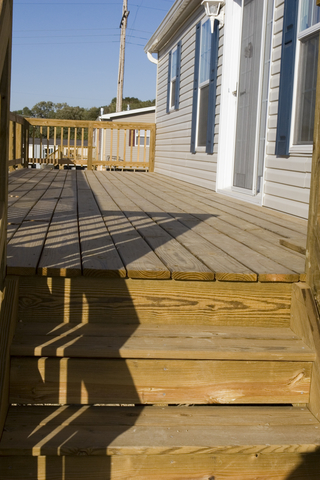Modular Buildings first became popular because they were cheap and easy to assemble than stick-built construction. So, what is a modular building? It is a home or other building that is built in a factory in sections. The sections are then transported to its intended location, where assembly takes place.
Modular buildings and log cabin kits share some favorable attributes.
- Both can be built on different types of foundations including slab, crawl space, and basement.
- Both can be customized. However, a Conestoga log cabin kit has far more flexibility.
- Neither depreciates in value like manufactured homes or mobile homes. However modular buildings may be difficult to resell due to the stigma surrounding them.
- Green manufacturing processes can be used by both.
- Both can be used for commercial applications such as offices as well as residential homes, churches, and medical facilities.
- Both can be built to comply with accessibility codes.
- Much of assembly takes place in a warehouse or factory ensuring that pieces fit together properly.
- Both are built to comply with state and local building codes.
- Both can be built to withstand elements such as hurricanes and earthquakes.
- Both can meet the needs of a variety of commercial functions.

Unfortunately, there are some drawbacks to modular buildings:
- Their maximum width is determined by transportation regulations. To have wider rooms two modules have to be joined with an unsightly connector piece. Generally, rooms are not more than 14-16 feet wide.
- Some local building authorities prohibit modular building construction.
- Modular buildings are often limited in their delivery area. Shipping modules over distances longer than a couple of hundred miles runs the risk of damaging the product, and can be prohibitively expensive. Conestoga log cabin kits have been sold to all 50 states as well as foreign countries.
You can learn more about modular buildings and log cabin kits at https://conestogalogcabins.com/press_room/cabin-kits-vs-modular-cabins/
